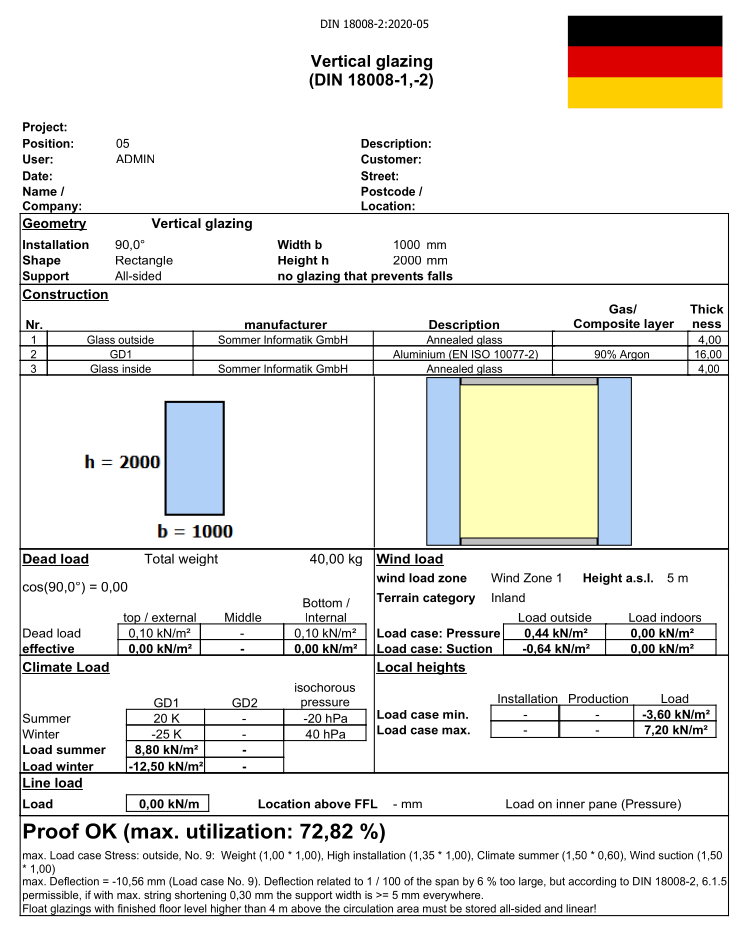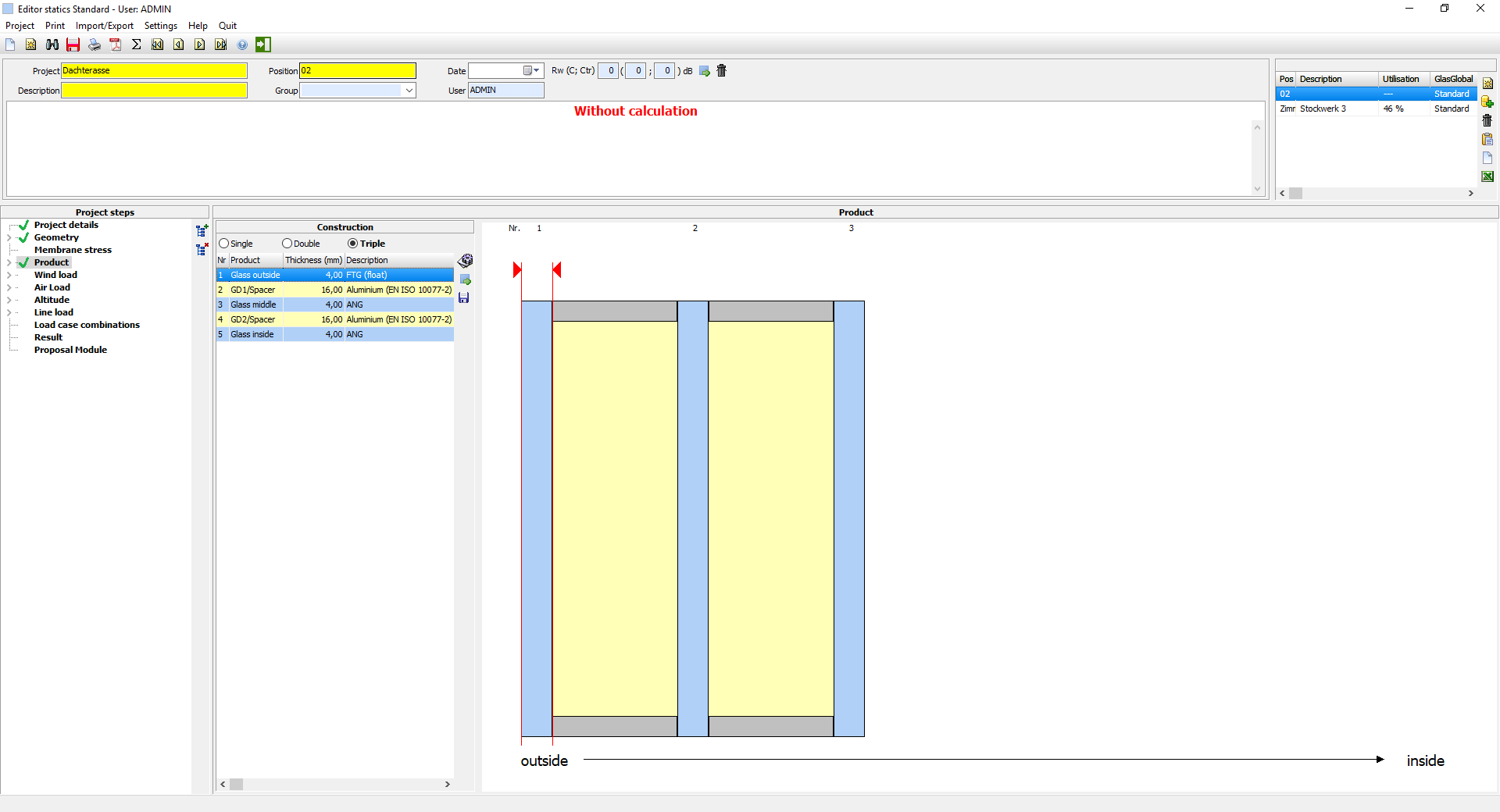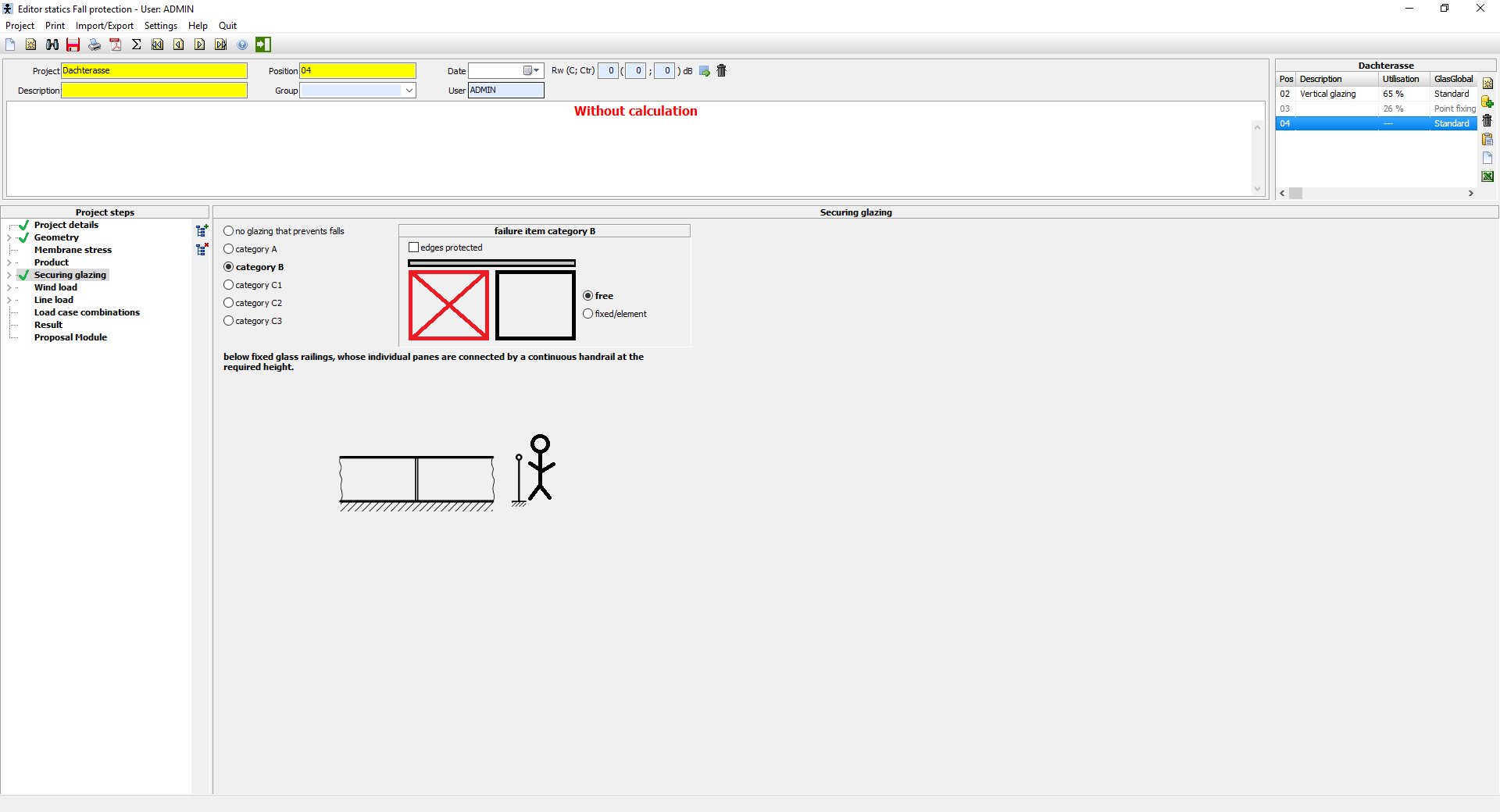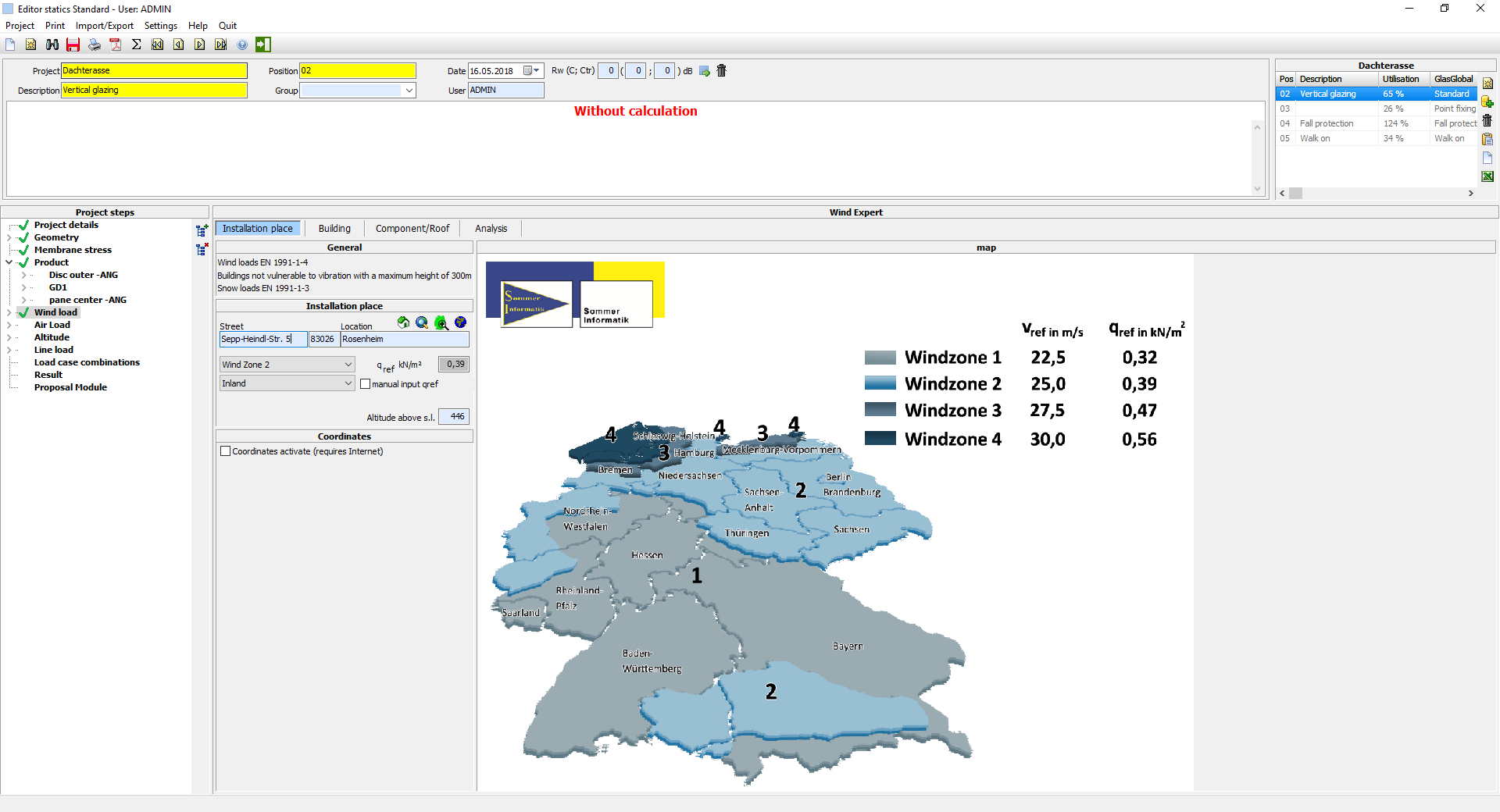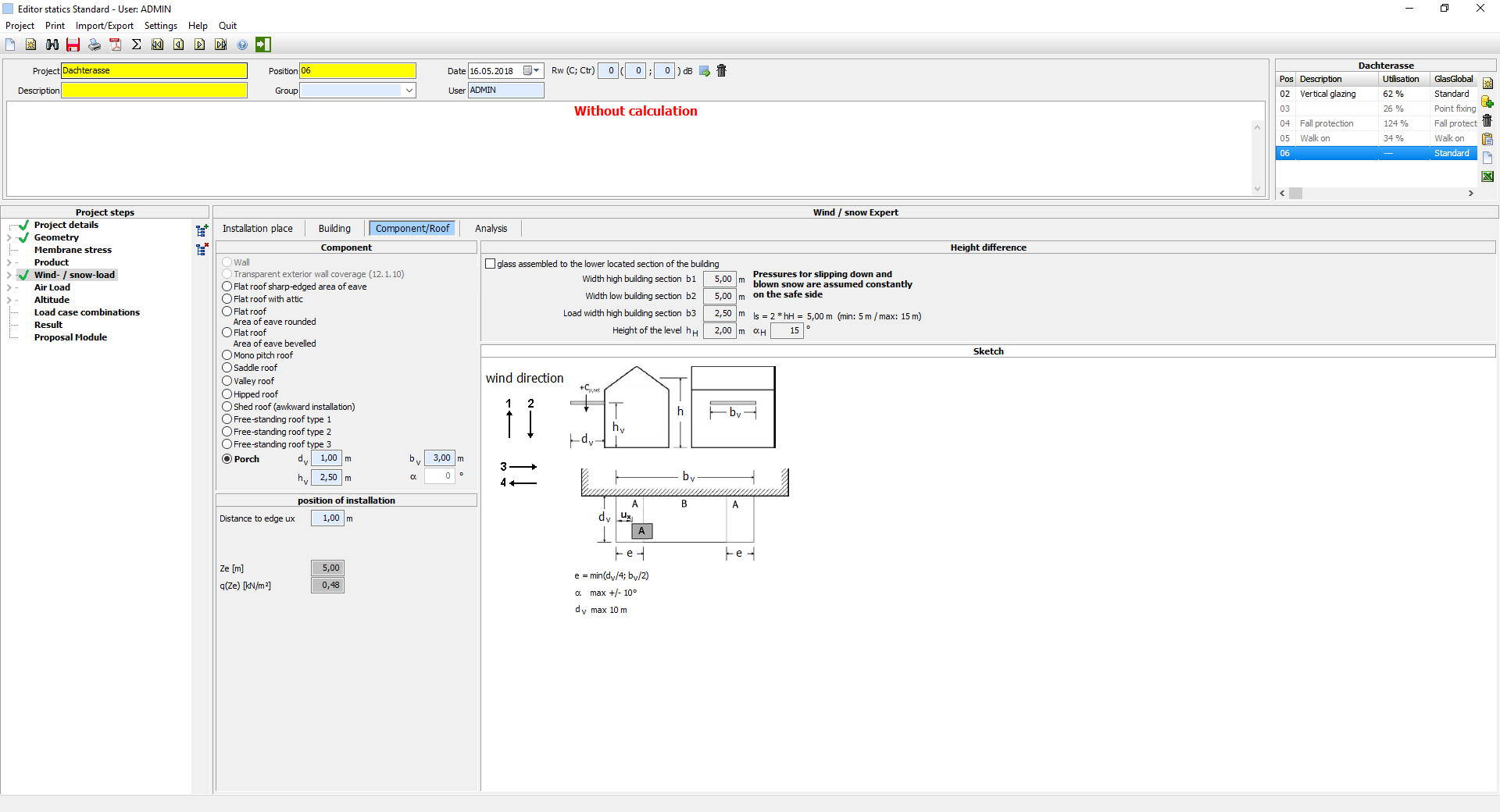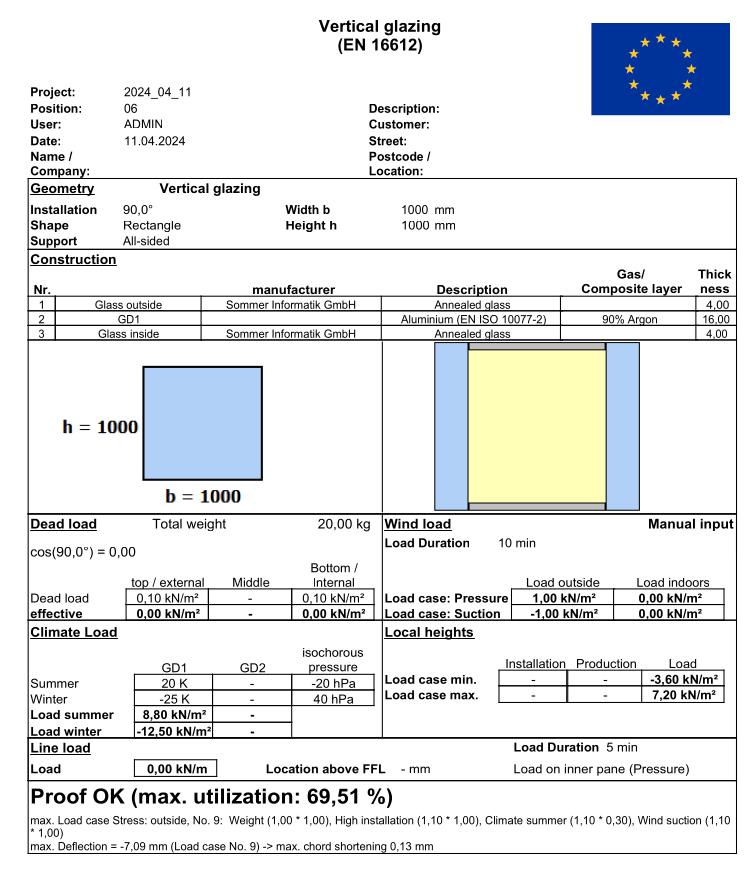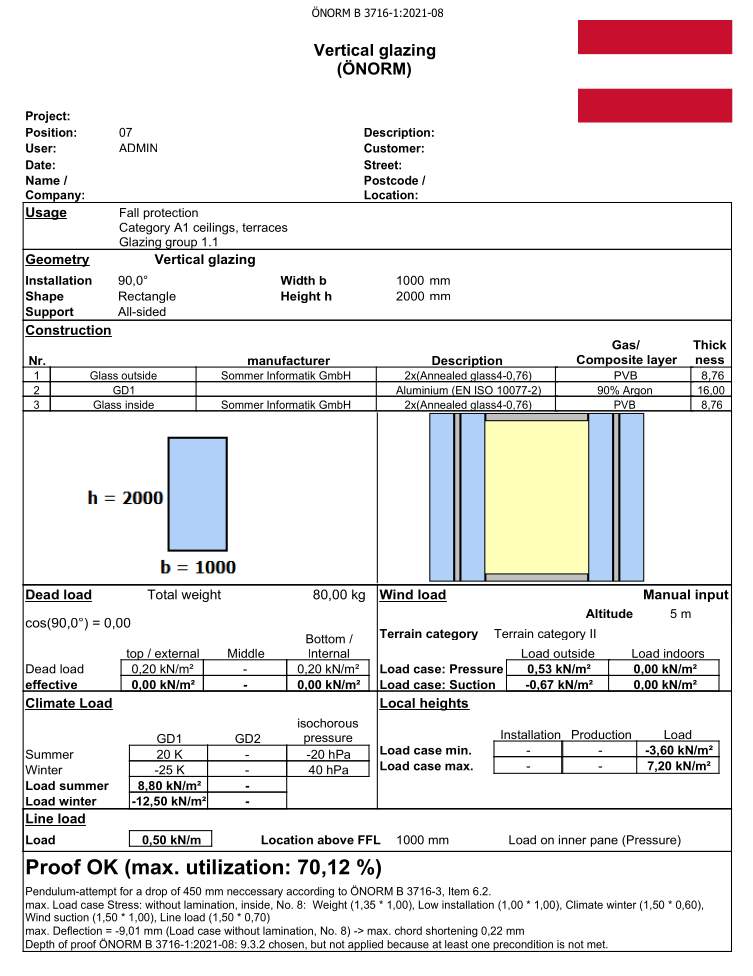GLASGLOBAL® 18008
Expert software for calculating the structural analysis of glazing in accordance with DIN 18008 and load assumptions in accordance with DIN EN 1991-1.
Professional calculation
Powerful glass statics calculation according to DIN 18008
Validated
for calculations according to DIN 18008
Powerful functionality
for the structural analysis of windows and facades
The professional glass statics software GLASGLOBAL® according to DIN 18008 includes all load assumptions and calculations required by DIN 18008. GLASGLOBAL® can be used to dimension glass statically in accordance with DIN 18008. All loads to be taken into account, such as snow, wind, dead weight, traffic loads or climatic fluctuations in air pressure and temperature, are checked during the calculation. The verifications of stress and deflection are displayed together with the applied loads on a clear printout of the results.
Features
- Static verification of glazing according to DIN 18008: 2012 Part 1 to 6
- Large number of pre-installed products such as glasses, point and clamp holders
- Calculation of any shape and support of the glazing using the finite element method
- Maximum values of the deflection and tension of the individual washers for relevant and freely defined load combinations
- Verification of all load combinations (snow, wind, dead weight, live loads)
- Wind and snow loads for Germany according to EN 1991-1-3 and -4 with optionally available wind and snow load module for Switzerland
Test our demo version!
Why GLASGLOBAL® 18008?
- Certified by independent testing institutes
- Results are internationally recognized
- Extremely user-friendly in operation
- Reliable partner for long-term customer satisfaction
- Market-ready solutions even before the adoption of corresponding laws and standards, with permanent updates - Our solutions are always up to date
GLASGLOBAL® 18008
Basic module
according to DIN 18008 – 1+2
The regulations on glass dimensioning in Germany have constantly developed and changed in recent years. The previously applicable regulations TRLV, TRAV and TRPV have been replaced by DIN 18008 Glass in Building – Design and Construction Rules. Linear glazing, which was still defined in the TRLV until December 2010, has since been included in DIN 18008 Part 2. For example, calculations are no longer based on a global safety factor, but on partial safety factors. These take into account the uncertainties in the system, the loads and the materials.
Point-fixed glazing according to DIN 18008 – 3
The Technical Rules for the Design and Construction of Point-Mounted Glazing (TRPV) for vertical and overhead glazing, which were valid until the end of 2010, have been replaced by DIN 18008 Part 3. The standard distinguishes between two types of support. On the one hand, there are disc brackets, which are attached to the glazing by means of a hole, and on the other hand, there are clamp brackets, which are attached to the edge of the glass without a hole. You can enter and calculate both in GLASGLOBAL® in a short time using the point fixings module.
Fall-protection glazing according to DIN 18008 – 4
If glass elements prevent people from falling from a great height, this is known as fall-protection glazing, which is regulated in DIN 18008 Part 4. Explanation of the individual categories:
- Category A: Glazing that has to transfer horizontal live loads because it does not have a load-bearing spandrel beam or a projecting tie bar at the required height to support horizontal live loads in accordance with DIN EN 1991-1-1:2010-12, 6.4 and DIN EN 1991-1-1/NA:2010-12,6.4.
- Category B: Glass balustrades clamped at the bottom, the individual panes of which are connected by a continuous handrail at the required height.
- Category C1: Railing infills that do not have to support horizontal live loads at the required height.
- Category C2: Glazing below a load-bearing transom arranged at the required height that does not have to transfer horizontal live loads at the required height.
- Category C3: Glazing with a load-bearing spar placed in front at the required height, which does not have to transfer horizontal live loads at the required height.
Walk-on glazing
according to DIN 18008 – 5
The additional requirements for walk-on glazing are regulated in Part 5 of DIN 18008. Walk-on glazing must consist of laminated safety glass with at least three panes. With GLASGLOBAL® Walkable, both symmetrical and asymmetrical laminated safety glass can be verified as walkable glazing.
Accessible glazing
according to DIN 18008-6
In accordance with DIN 18008-6, the "Accessible" add-on has been implemented in GLASGLOBAL®. DIN 18008-6 distinguishes between the following types of glazing:
- Accessible glazing Glazing that can be entered for maintenance work (e.g. cleaning).
- Fall-through resistant glazing Glazing that cannot be walked on and is located near areas that can be accessed for maintenance work.
Wind and snow load Germany
By entering the zip code, the wind and snow load zones are automatically determined in accordance with EN 1991-1-3 and EN 1991-1-4 and all required values are inserted.
Size matrix
See at a glance which dimensions would be suitable for your glazing and how high their degree of utilisation is.
Other variants & functions
GLASGLOBAL® 16612
GLASGLOBAL® 16612 can be used to statically dimension glass in accordance with the European standard (EN16612). All loads to be taken into account, such as snow, wind, dead weight, traffic loads or climatic fluctuations in air pressure and temperature, are checked during the calculation. The stress and deflection verifications are displayed together with the applied loads on a clear printout of the results.
GLASGLOBAL® AGSB
With AGSB, glass can be statically dimensioned in accordance with ÖNORM B 3716. All loads to be taken into account, such as snow, wind, dead weight, traffic loads or climatic fluctuations in air pressure and temperature, are checked during the calculation. The stress and deflection verifications are displayed together with the applied loads on a clear printout of the results.
GLASGLOBL® Switzerland
With GLASGLOBAL® Switzerland, glass can be statically dimensioned in accordance with SIA 2057. All loads to be taken into account, such as snow, wind, dead weight, traffic loads or climatic fluctuations in air pressure and temperature, are checked during the calculation. The stress and deflection verifications are displayed together with the applied loads on a clear printout of the results.
GLASGLOBAL® ASTM
GLASGLOBAL® ASTM can be used to statically dimension glass in accordance with E1300-16. All loads to be taken into account, such as snow, wind, dead weight, traffic loads or climatic fluctuations in air pressure and temperature, are checked during the calculation. The stress and deflection verifications are displayed together with the applied loads on a clear printout of the results.
SOMMERGLOBAL Cloud
- Save local calculations from SommerGlobal in the cloud
- Retrieve calculations from the cloud regardless of location
- Load and edit items anytime and anywhere
- View proofs as mobile documents
- Manual storage by the user
- Encrypted data
Test our demo version!
Test our demo version!
Our customer feedback
Explanation of terms

Statics (DIN 18008-1,-2)

Point-fixed (DIN 18008-3)

Fall-protection (DIN 18008-4)

Walk-on (DIN 18008-5)

Accessible (DIN 18008-6)

Product-dependant shear modulus

Wind and snow load

Size matrix

Membrane tension


